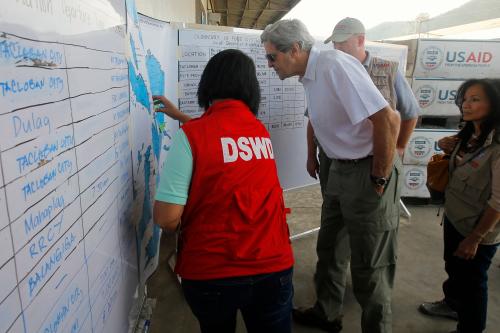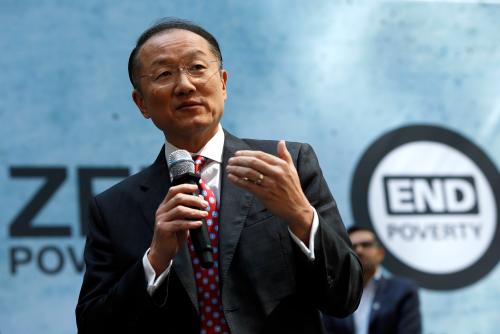As Day Two of the 2014 Brookings Blum Roundtable gets underway, Homi Kharas reflects on the key themes from Day One.
Q: What did you find to be the key takeaway from the first session, How Can Multinationals Engage With Governments to Support Economic Development?
The key takeaway for me was that public-private partnerships (PPPs) are a really powerful tool for development, but that there is still a long way to go to develop them to realize their full potential.
We talked about the fact that PPPs have a very long history—over a hundred years in some instances—and the thing that seems to characterize them over time is that they constantly evolve. There are no single identifiable criteria for how a PPP should function, and over the course of the discussions we heard about PPPs functioning in very different ways, how governments and the private sector have taken on non-traditional roles.
The idea that PPPs need to have creativity and the right timing, they need to be purposeful and focus on a common, shared problem– these are all good starting points, but we still need to think more creatively about how PPPs will actually be used for development.
Q2: How do you think today’s conversation will be built upon by the remaining sessions?
One of the things that emerged from today’s conversation is that it’s really important to understand the details and understand specific transactions in order to be able to come up with some sensible criteria for how PPPs should be fashioned, and in the remaining sessions I think we will focus more on very specific types of transactions and interventions. That will be quite a useful way of seeing whether that level of disaggregation is sufficient or whether we still need to go down to a more fine grained level in order to come up with practical solutions. The tension I think that we are seeing is that many people around the table have good examples—individual examples—of PPPs but it’s difficult to then put those together in an aggregate way that can be applied, and if you have to reinvent the PPP each time from scratch that makes it expensive, it makes it uncertain, and it makes it into a non-standardized tool for development. So I hope that what we will get in the sessions to come is some thinking that helps us understand how we can standardize PPPs a little more.
Q3: What are you looking forward to most in the coming conversations?
What I’m looking forward to most is a little more detail on some of the more successful examples of where the private sector and development objectives have been aligned with each other. We have a tremendous cross-section of people around the table who have been working in these areas and have had very powerful examples, and already we are starting to find that examples from one area may be transferred to other areas as discussants put on the table the details of those particular cases.






Commentary
The 2014 Brookings Blum Roundtable: Reflections on Day One
August 8, 2014